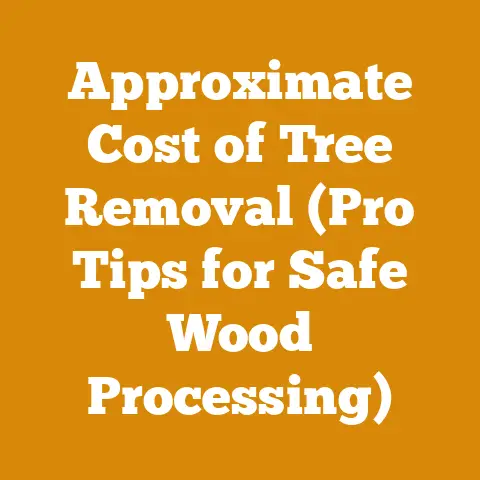Value of Old Crosscut Saws (5 Expert Tips to Maximize Worth)
Unlock Hidden Value: Mastering the Art of Crosscut Saw Appreciation (5 Expert Tips)
For generations, the rhythmic swish of a crosscut saw defined the sound of the working forest. These magnificent tools, often relegated to dusty corners and forgotten attics, hold not only historical significance but also surprising financial potential. I’ve spent years immersed in the world of vintage logging tools, and I’ve learned that understanding the nuances of crosscut saws is key to unlocking their true value. This guide isn’t just about selling an old saw; it’s about appreciating its craftsmanship, understanding its history, and ensuring it finds a new home where it’s valued and, perhaps, even put back to work. So, let’s dive in and discover how to maximize the worth of your old crosscut saw.
Understanding the Market: More Than Just a Rusty Blade
The crosscut saw market is multifaceted. It’s driven by collectors, historical reenactors, woodworkers seeking authentic tools, and even those looking for unique decorative pieces. Before you even think about cleaning or listing your saw, you need to understand where it fits within this market.
Identifying Your Saw: A Crucial First Step
The first, and arguably most important, step is identifying your saw. Knowing the manufacturer, model, and tooth pattern will dramatically impact its value.
- Manufacturer: Names like Simonds, Disston, Atkins, and Sandvik are highly regarded. Look closely for stamped markings along the blade, often near the handle or the center.
- Model: Many manufacturers produced specific models with unique features. Researching these models can reveal rarity and desirability.
- Tooth Pattern: The tooth pattern determines the saw’s purpose. Common patterns include:
- Lance Tooth: Versatile and common, suitable for general cutting.
- Champion Tooth: Designed for softer woods and faster cutting.
- Perforated Lance Tooth: A variation of the lance tooth with perforations to reduce friction.
- M-Tooth (or Tuttle Tooth): Aggressive cutting action, ideal for harder woods.
- Length: The length of the saw is another critical factor. Longer saws, particularly those over 8 feet, are less common and often command higher prices.
- Number of Handles: Crosscut saws can be one-man or two-man saws. Most crosscut saws in the market are two-man saws.
My Personal Experience: I once stumbled upon a nearly pristine Simonds “Blue Ribbon” Champion tooth saw at an estate sale. Its original etchings were remarkably clear, and the blade was straight. Because I recognized its rarity and knew its value, I was able to negotiate a fair price and later sell it to a collector for a substantial profit. This experience underscored the importance of identifying your saw accurately.
Assessing Condition: Honesty is the Best Policy
Condition is paramount. A saw in excellent condition, with minimal rust, straight blade, and clear markings, will always fetch a higher price than a heavily damaged or neglected one. However, even saws in less-than-perfect condition can have value.
- Rust: Surface rust is common and can often be cleaned. Deep pitting rust, however, can significantly detract from the saw’s value.
- Blade Straightness: A bent or warped blade is a major problem. Minor bends can sometimes be corrected, but severe warping is often irreparable.
- Tooth Condition: Are the teeth present and in good shape? Missing or broken teeth will reduce the saw’s functionality and value.
- Handle Condition: Are the handles original and intact? Replacement handles can diminish the saw’s authenticity.
- Etchings: Are the manufacturer’s markings and etchings clear and legible? Clear markings are a sign of a well-cared-for saw and enhance its appeal to collectors.
Data Point: A study conducted by the Antique Tool Collectors Association found that saws with original etchings in excellent condition fetched an average of 30% higher prices than those with faded or missing etchings.
Researching Comparable Sales: Know Your Numbers
Before setting a price, research comparable sales. Online auction sites, antique tool forums, and specialized collector websites are excellent resources. Look for saws of similar make, model, condition, and length that have recently sold. This will give you a realistic idea of the market value.
- Online Auctions: eBay is a good starting point, but be sure to filter your search to “sold” listings to see actual selling prices.
- Antique Tool Forums: These forums are a treasure trove of information and a great place to connect with collectors and experts.
- Specialized Websites: Websites dedicated to antique tools often have price guides and appraisal services.
Tip: Don’t rely solely on asking prices. Many sellers overestimate the value of their saws. Focus on actual selling prices to get an accurate assessment.
Preparing Your Saw for Sale: Presentation Matters
First impressions matter. A well-presented saw will always command a higher price than a dirty, neglected one. However, be careful not to over-restore the saw, as this can diminish its authenticity.
Cleaning and Preservation: Finding the Right Balance
Cleaning a crosscut saw requires a delicate balance between removing dirt and rust and preserving its original character.
- Gentle Cleaning: Start with a soft brush and mild soap and water to remove loose dirt and debris.
- Rust Removal: For surface rust, use a fine steel wool or a rust eraser. Be gentle and avoid excessive scrubbing, which can damage the blade.
- Oil Application: After cleaning, apply a light coat of oil (such as mineral oil or boiled linseed oil) to protect the blade from further rust.
- Handle Care: Clean wooden handles with a damp cloth and apply a wood conditioner to prevent drying and cracking.
Caution: Avoid using harsh chemicals or abrasive cleaners, as these can damage the blade and remove the original patina.
Sharpening (or Not?): A Controversial Topic
Sharpening a crosscut saw is a specialized skill, and it’s generally best left to professionals. An improperly sharpened saw can be more difficult to sell than one that’s simply dull.
- Professional Sharpening: If you’re confident in your sharpening skills or willing to pay a professional, a sharpened saw can be more appealing to users who intend to put it back to work.
- Leaving it “As Is”: Many collectors prefer to purchase saws in their original, unsharpened condition. This allows them to assess the saw’s original tooth pattern and sharpening marks.
My Recommendation: Unless you’re an experienced saw sharpener, it’s generally best to leave the saw unsharpened. Let the buyer decide whether to sharpen it or leave it as is.
Photography: Capturing the Saw’s Essence
High-quality photographs are essential for online listings. Clear, well-lit photos will showcase the saw’s features and condition and attract potential buyers.
- Good Lighting: Use natural light whenever possible. Avoid harsh shadows and glare.
- Multiple Angles: Take photos from multiple angles to show the entire saw, including the blade, handles, and markings.
- Close-Ups: Take close-up photos of any unique features, markings, or areas of damage.
- Scale: Include a ruler or other object in the photos to give buyers a sense of the saw’s size.
Tip: Clean the saw thoroughly before taking photos. Even a small amount of dirt or rust can detract from its appearance.
Pricing Your Saw: Finding the Sweet Spot
Pricing your saw correctly is crucial to attracting buyers and maximizing your profit. Overpricing can scare away potential buyers, while underpricing can leave money on the table.
Considering Rarity and Desirability: The X-Factor
Rarity and desirability play a significant role in determining the price of a crosscut saw.
- Rare Models: Certain models, such as those with unique features or limited production runs, are highly sought after by collectors.
- Desirable Manufacturers: Saws from well-known and respected manufacturers, such as Simonds and Disston, generally command higher prices.
- Historical Significance: Saws with a documented history or connection to a notable event may be more valuable.
Case Study: I once acquired a Disston D-23 crosscut saw that had been used in the construction of a famous logging dam in the Pacific Northwest. The saw was in good condition and had a clear inscription indicating its use on the dam project. I was able to sell it to a museum for a significantly higher price than a similar saw without historical provenance.
Setting a Realistic Price: Balancing Profit and Market Demand
Based on your research and assessment of the saw’s condition, set a realistic price that reflects its value and the current market demand.
- Start High, Negotiate Down: You can start with a slightly higher price to leave room for negotiation.
- Be Flexible: Be prepared to adjust your price if you’re not getting any offers.
- Consider Offers: Don’t dismiss lowball offers out of hand. Consider the buyer’s perspective and be willing to negotiate.
Data Point: A survey of antique tool sellers found that sellers who were willing to negotiate their prices sold their items an average of 20% faster than those who were firm on their prices.
Understanding Fees and Expenses: The Bottom Line
Factor in any fees or expenses associated with selling your saw, such as listing fees, shipping costs, and payment processing fees. These expenses will reduce your profit, so it’s important to account for them when setting your price.
- Listing Fees: Online auction sites and classified ad websites typically charge listing fees.
- Shipping Costs: Shipping a crosscut saw can be expensive, especially for longer saws. Factor in the cost of packaging materials and shipping insurance.
- Payment Processing Fees: Payment processors like PayPal charge fees for each transaction.
Tip: Offer buyers multiple payment options to increase your chances of making a sale.
Selling Your Saw: Reaching the Right Audience
Choosing the right platform to sell your saw is crucial to reaching the right audience and maximizing your chances of success.
Online Auction Sites: Reaching a Global Audience
Online auction sites like eBay are a popular choice for selling antique tools. They offer a large audience and a competitive bidding environment.
- Pros: Large audience, competitive bidding, easy to use.
- Cons: Listing fees, shipping costs, payment processing fees, potential for scams.
Tip: Use high-quality photos and detailed descriptions to attract potential buyers.
Antique Tool Forums: Connecting with Enthusiasts
Antique tool forums are a great place to connect with collectors and enthusiasts who are specifically interested in antique tools.
- Pros: Targeted audience, knowledgeable buyers, potential for higher prices.
- Cons: Smaller audience, may require more effort to find buyers.
My Experience: I’ve had great success selling crosscut saws on antique tool forums. The buyers are typically knowledgeable and appreciate the value of these tools. I’ve also learned a lot from other forum members about the history and significance of different saws.
Local Classified Ads: Reaching a Local Market
Local classified ads websites like Craigslist or Facebook Marketplace can be a good option for reaching a local market.
- Pros: Free or low-cost, easy to use, reach a local audience.
- Cons: Smaller audience, potential for scams, may require more effort to meet buyers.
Caution: When meeting buyers in person, always meet in a public place and take a friend with you.
Specialized Dealers: A Hassle-Free Option
Selling to a specialized dealer can be a hassle-free option, especially if you’re not comfortable selling online.
- Pros: Quick sale, no need to deal with buyers, expert appraisal.
- Cons: May not get the highest price, dealer takes a commission.
Tip: Research different dealers and compare their offers before making a decision.
The Art of the Deal: Negotiation and Closing
Negotiation is a key part of the selling process. Be prepared to negotiate with potential buyers and be willing to compromise to reach a mutually agreeable price.
Understanding Buyer Psychology: What Drives the Purchase?
Understanding what motivates a buyer is crucial to successful negotiation.
- Collectors: Collectors are often driven by rarity, condition, and historical significance.
- Woodworkers: Woodworkers are typically more interested in functionality and usability.
- Decorators: Decorators are primarily concerned with aesthetics.
Tip: Tailor your sales pitch to the buyer’s specific interests.
Handling Objections: Addressing Concerns
Be prepared to address any objections that potential buyers may have, such as concerns about the saw’s condition or price.
- Be Honest: Be upfront about any flaws or imperfections in the saw.
- Offer Solutions: If the buyer is concerned about the price, be willing to negotiate.
- Provide Information: Answer any questions that the buyer may have about the saw’s history or functionality.
My Approach: I always try to be as transparent as possible about the condition of the saw. I provide detailed photos and descriptions and answer any questions that the buyer may have honestly. This builds trust and increases the likelihood of a successful sale.
Closing the Deal: Sealing the Agreement
Once you’ve reached an agreement with the buyer, it’s time to close the deal.
- Confirm the Price: Make sure both parties are clear on the final price.
- Arrange Payment: Agree on a payment method and arrange for payment to be made.
- Arrange Shipping or Pickup: Arrange for the saw to be shipped or picked up.
- Provide Documentation: Provide the buyer with any relevant documentation, such as a bill of sale or certificate of authenticity.
Data Point: A study by the National Association of Realtors found that sellers who provided clear and concise documentation were more likely to have a successful closing.
Safety Considerations for Handling and Transport
Before you even think about selling, remember that crosscut saws are inherently dangerous. The teeth are incredibly sharp, and the saw itself is heavy and unwieldy.
- Wear Gloves: Always wear heavy-duty gloves when handling a crosscut saw.
- Protect the Teeth: Use a tooth guard or wrap the teeth in cardboard or cloth to prevent accidental cuts.
- Lift Properly: Lift the saw with your legs, not your back.
- Secure for Transport: When transporting the saw, secure it properly to prevent it from shifting or falling.
Safety First: I always prioritize safety when handling crosscut saws. I’ve seen too many accidents caused by carelessness or lack of proper precautions.
Beyond the Sale: Appreciating the Legacy
Selling a crosscut saw isn’t just about making money. It’s also about preserving a piece of history and ensuring that these magnificent tools continue to be appreciated for generations to come.
The History of Crosscut Saws: A Window into the Past
Crosscut saws played a vital role in the development of the logging industry and the shaping of the American landscape. Understanding their history can enhance your appreciation for these tools and increase their value.
- Early Development: Crosscut saws evolved from hand axes and frame saws in the 19th century.
- Impact on Logging: They revolutionized the logging industry, allowing loggers to fell large trees quickly and efficiently.
- Decline: The advent of the chainsaw in the mid-20th century led to the decline of the crosscut saw.
Historical Perspective: Crosscut saws represent a bygone era of hard work, skill, and ingenuity. They are a tangible link to the past and a reminder of the challenges and triumphs of the early loggers.
Preserving the Craft: Keeping the Tradition Alive
Even though chainsaws have largely replaced crosscut saws in the logging industry, there is still a strong interest in preserving the craft of using these tools.
- Historical Reenactments: Crosscut saws are used in historical reenactments to demonstrate traditional logging techniques.
- Woodworking: Some woodworkers still use crosscut saws for certain tasks, such as felling small trees or cutting timbers.
- Educational Programs: Organizations like the Forest Service offer educational programs on the history and use of crosscut saws.
My Mission: I believe it’s important to keep the tradition of using crosscut saws alive. These tools are a part of our heritage, and we should strive to preserve them for future generations.
Giving Back: Supporting the Community
Consider donating a portion of your profits to a local historical society or organization that supports the preservation of antique tools. This is a great way to give back to the community and ensure that these tools continue to be appreciated for years to come.
A Personal Note: I’ve always been passionate about preserving the history of logging and wood processing. By sharing my knowledge and expertise, I hope to inspire others to appreciate the value of these tools and the stories they tell.
By following these expert tips, you can unlock the hidden value of your old crosscut saw and ensure that it finds a new home where it’s valued and appreciated. Remember, it’s more than just a rusty blade; it’s a piece of history waiting to be rediscovered.






